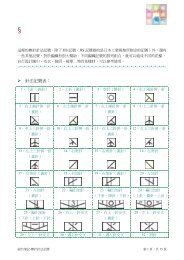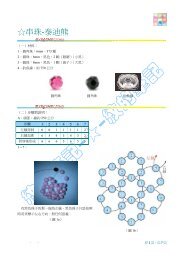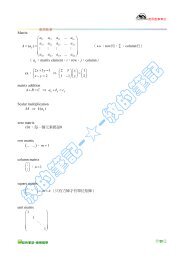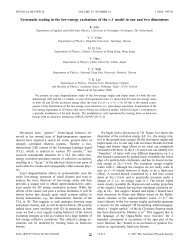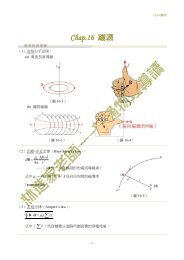Chapter 22 Materials Selection and Design Considerations
Chapter 22 Materials Selection and Design Considerations
Chapter 22 Materials Selection and Design Considerations
Create successful ePaper yourself
Turn your PDF publications into a flip-book with our unique Google optimized e-Paper software.
W108 • <strong>Chapter</strong> <strong>22</strong> / <strong>Materials</strong> <strong>Selection</strong> <strong>and</strong> <strong>Design</strong> <strong>Considerations</strong><br />
surface was composed entirely of dimples, which confirms that this material was at<br />
least moderately ductile <strong>and</strong> that there was no evidence of brittle fracture. Thus,<br />
although this center-core material exhibited mixed-mode fracture under impact<br />
loading conditions, when the load was applied at a relatively slow rate (as with the<br />
tensile test), failure was highly ductile in nature.<br />
<strong>22</strong>.9 DISCUSSION<br />
In light of the previous discussion it was supposed that the truck rollover was<br />
responsible for the axle failure. Reasons for this supposition are as follows:<br />
1. The outer perimeter region of the failed axle shaft failed in a brittle manner,<br />
as did also the specimen taken from this region that was impact tested. This<br />
conclusion was based on the fact that both fracture surfaces were very flat,<br />
<strong>and</strong> that SEM micrographs revealed the presence of cleavage facets.<br />
2. The fracture behavior of the central core region was strain-rate sensitive, <strong>and</strong><br />
indicated that axle failure was due to a single high strain-rate incident. Fracture<br />
surface features for both the failed axle <strong>and</strong> impact-tested (i.e., highstrain-rate-tested)<br />
specimens taken from this core region were similar: SEM<br />
micrographs revealed the presence of features (cleavage features <strong>and</strong> dimples)<br />
that are characteristic of mixed mode (brittle <strong>and</strong> ductile) fracture.<br />
In spite of evidence supporting the validity of the accident-caused-axle-failure<br />
scenario, the plausibility of the other (axle-failure-caused-the-accident) scenario was<br />
also explored. This latter scenario necessarily assumes that a fatigue crack or some<br />
other slow-crack propagation mechanism initiated the sequence of events that<br />
caused the accident. In this case it is important to consider the mechanical characteristics<br />
of that portion of the specimen that was last to fail—in this instance, the<br />
core region. If failure was due to fatigue, then any increase in loading level of this<br />
core region would have occurred relatively slowly, not rapidly as with impact loading<br />
conditions. During this gradually increasing load level, fatigue crack propagation<br />
would have continued until a critical length was achieved (i.e., until the remaining<br />
intact axle cross section was no longer capable of sustaining the applied load); at<br />
this time, final failure would have occurred.<br />
On the basis of the tensile tests (i.e., slow strain-rate tests) performed on this<br />
core region, the appearance of the axle fracture surface would be entirely ductile<br />
(i.e., dimpled, as per the SEM micrograph of Figure <strong>22</strong>.23). Inasmuch as this core<br />
region of the failed shaft exhibited mixed (ductile <strong>and</strong> brittle) mode fracture features<br />
(both cleavage features <strong>and</strong> dimples, Figure <strong>22</strong>.15), <strong>and</strong> not exclusively dimples, the<br />
axle-failure-caused-the-accident scenario was rejected.<br />
Artificial Total Hip Replacement<br />
<strong>22</strong>.10 ANATOMY OF THE HIP JOINT<br />
As a prelude to discussing the artificial hip, let us first briefly address some of the<br />
anatomical features of joints in general <strong>and</strong> the hip joint in particular. The joint is<br />
an important component of the skeletal system. It is located at bone junctions, where<br />
loads may be transmitted from bone to bone by muscular action; this is normally<br />
accompanied by some relative motion of the component bones. Bone tissue is a<br />
complex natural composite consisting of soft <strong>and</strong> strong protein collagen <strong>and</strong> brittle<br />
hydroxyapatite, which has a density between 1.6 <strong>and</strong> 1.7 g/cm Bone is an anisotropic<br />
3 .





